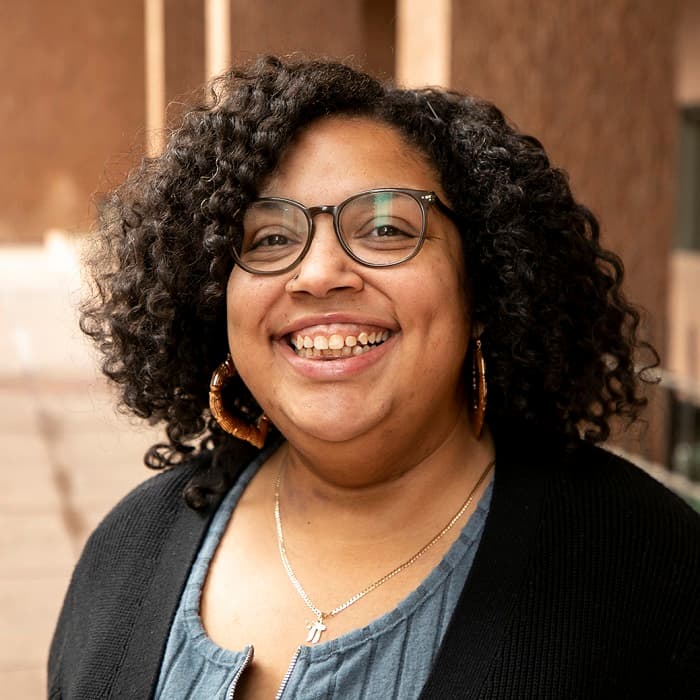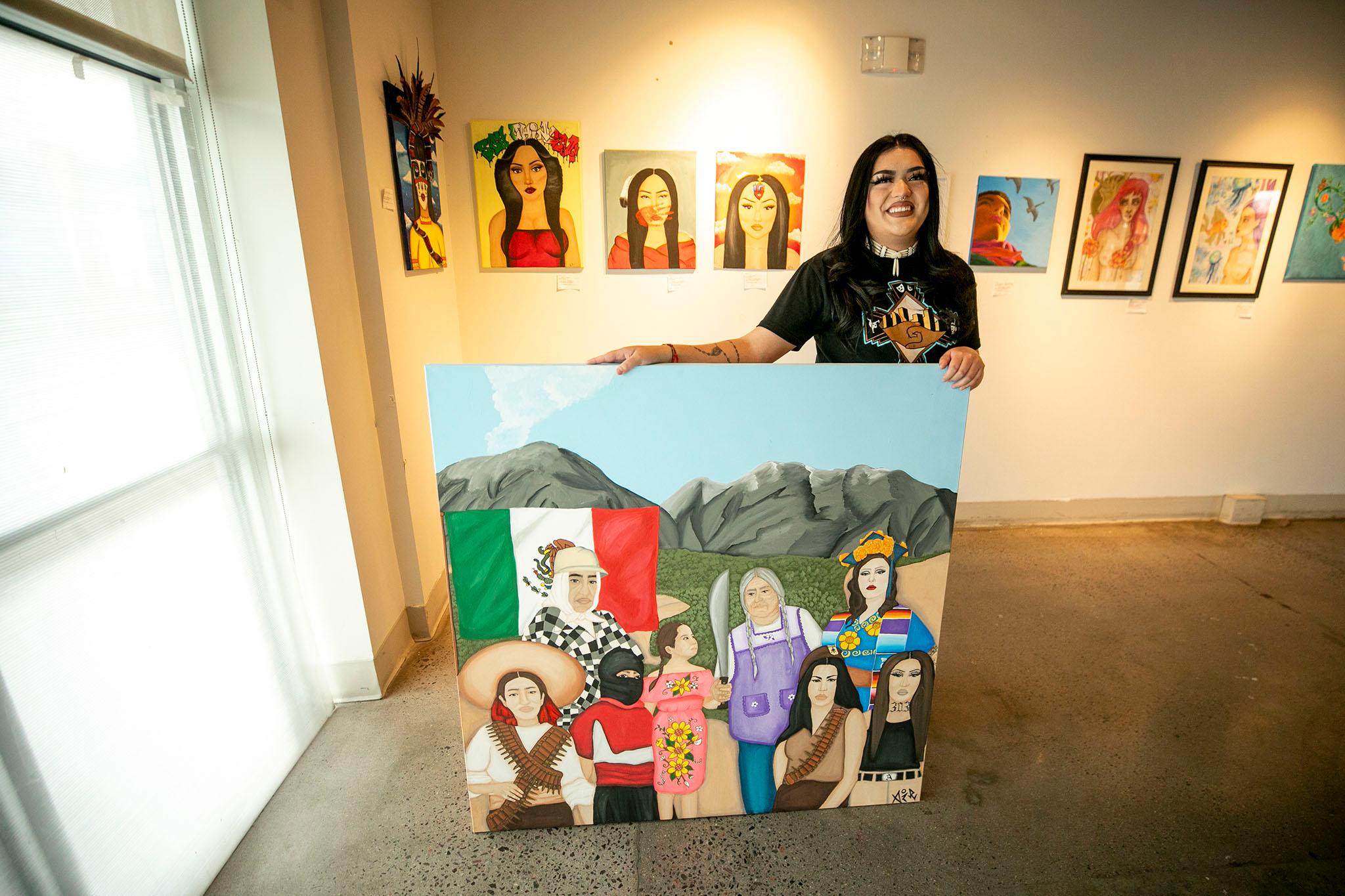Aalycia Rodriguez first discovered she could paint when she was 16 years old. She had always been "artistically inclined," creating crafts with her mom around their Westwood home.
But picking up a paint brush started her love of art and, unintentionally, her desire to find liberation.
Fast forward to today and Rodriguez is 19 years old, spreading her desire and love through her artwork and teachings. She's also the featured artist at this year's "Cinco de Mayo en Westwood." The free event at the RISE Westwood Campus on Saturday is hosted by Hecho en Westwood, Re:Vision and In Lak'ech Denver Arts, where Rodriguez teaches weekly visual arts classes for students in fifth grade and up.
Westwood community partners, such as Hecho and In Lak'ech, focus their events on historical and cultural lessons through art, food and dance. A Cinco de Mayo celebration would be no different, especially because the history is clouded by tequila and taco specials.
The holiday is about resistance and pride, which will be on full display in Westwood on Saturday. It's also on display in Rodriguez's art.
Art has given Rodriguez a sense of pride in two ways. For one, Rodriguez was diagnosed with cerebral palsy at 10 years old, so she's limited in her movements.
"I could never do physical activity very much, so I coped with art," Rodriguez said. "I wasn't outside playing, I was inside drawing and painting."
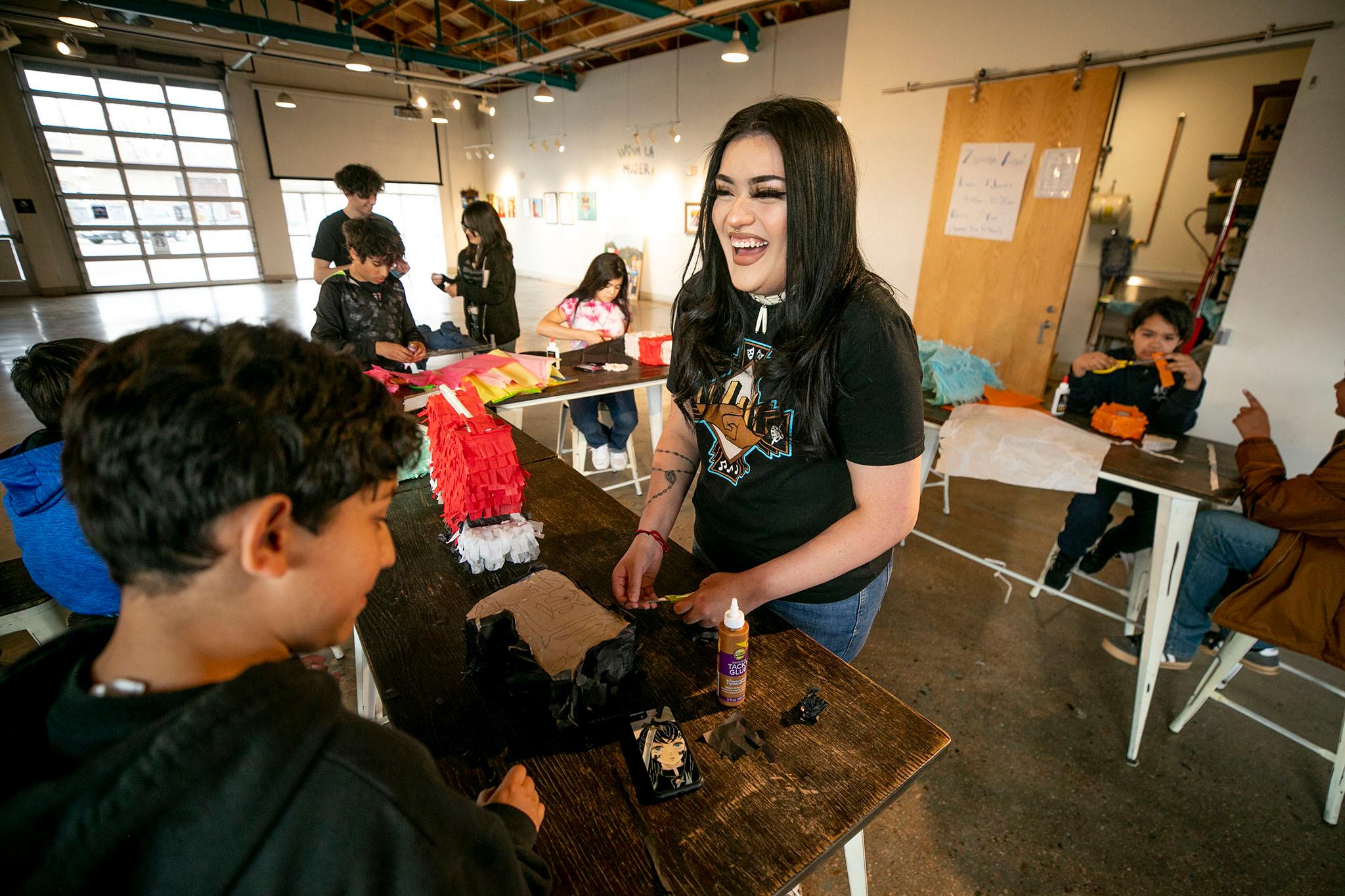
That's when she discovered her favorite artist, Frida Kahlo, a surrealist Mexican painter whose art focuses on gender, class and race through the lens of her experiences pushing gender norms, dealing with the patriarchy and battling with various health issues of her own.
Kahlo's health issues and the way she demonstrated that through her art resonated with Rodriguez. It also led to the second part of her liberation and sense of pride: learning about her ancestral history.
Rodriguez was raised by her mom, who grew up around the time where speaking Spanish and celebrating one's culture could cause conflict.
Rodriguez said her mom didn't really immerse her in their Mexican culture.
"My mom's from here and she grew up in that time where people were pushed to be more Americanized, so I never learned Spanish growing up. I never learned about my ancestors," Rodriguez said. "I was very disconnected from my culture as a kid. My mom tried her hardest to educate me as much as she could... but now I know I'm indigenous. I'm Chicana. I'm a woman. I'm just so many different things."
Rodriguez is currently on a journey learning and reconnecting with her roots. She uses art as a tool to navigate her journey and also share her learnings with her students.
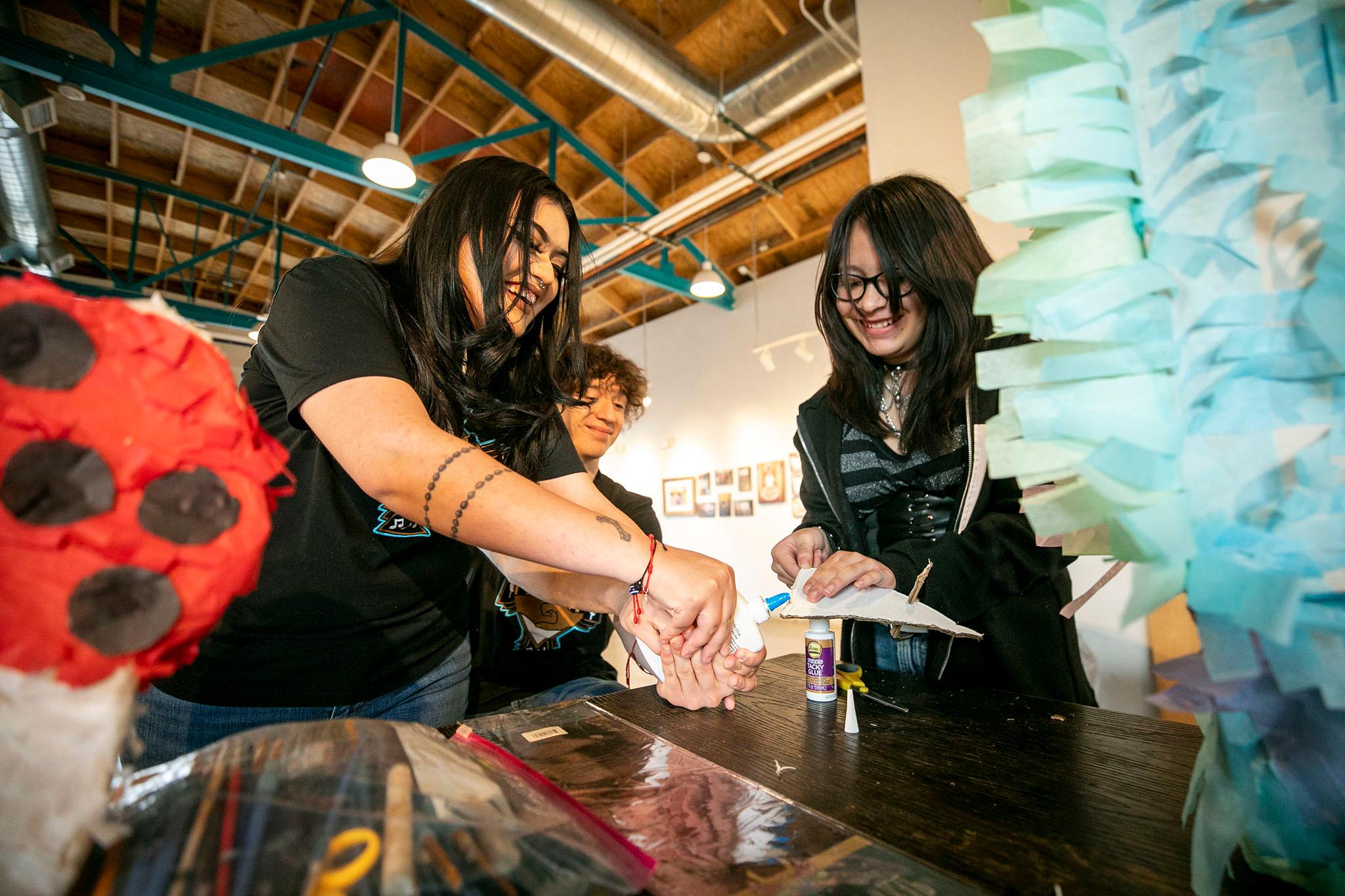
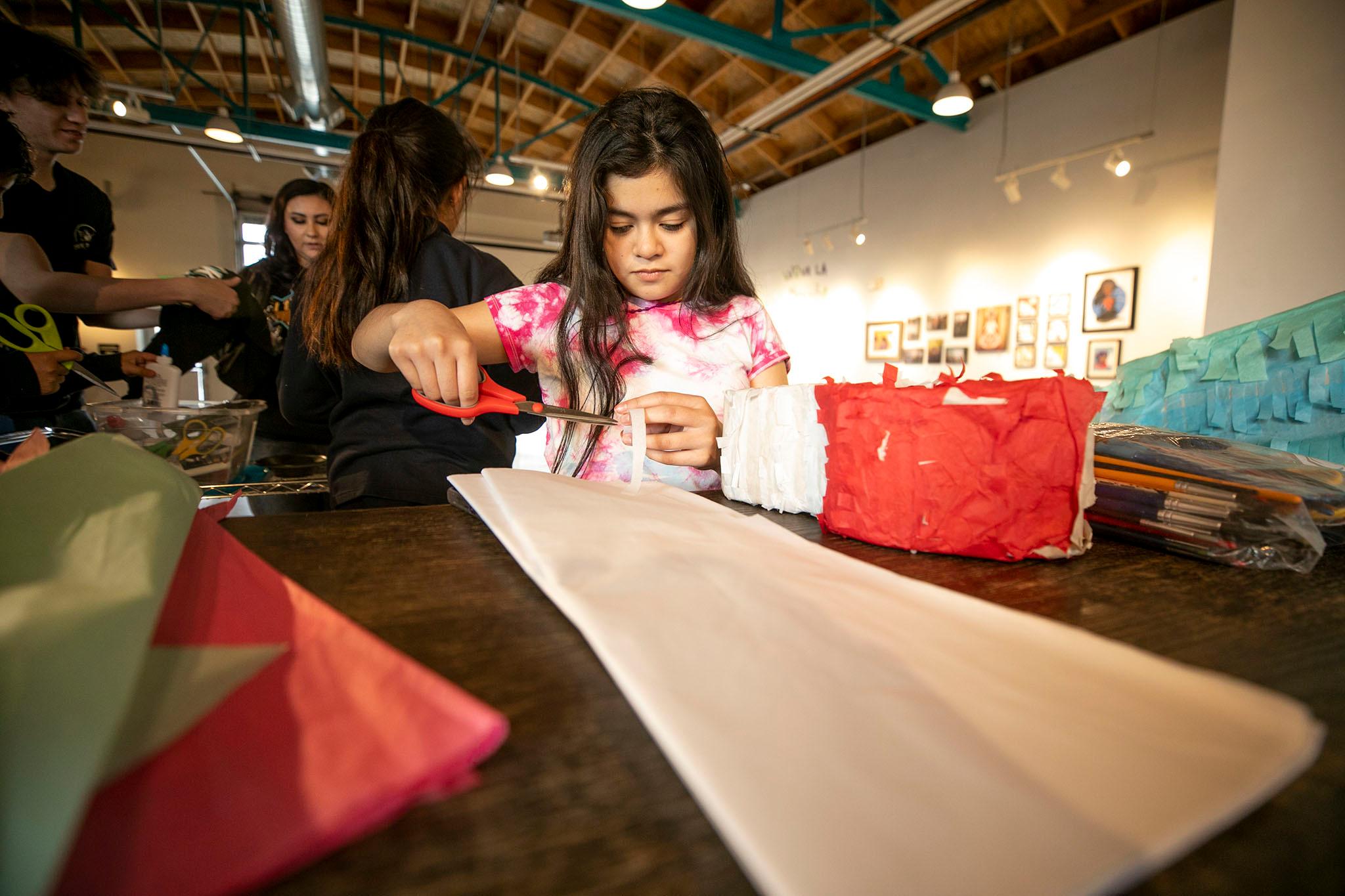
In Lak'ech has similar values. The nonprofit focuses on providing after school programming to fifth through 12th grade students who live in underserved communities.
Besides the art class taught by Rodriguez, In Lak'ech offers mariachi and folklorico dance classes.
Marianna Lucero started the programming with the intent of providing a community space that's affordable and culturally relevant.
"We definitely want to make sure that we are creating programming that's representative of the needs of this community and accessible because price is often a barrier especially for cultural arts programs," Lucero said. "It's nice to have spaces that are ours. It's important that we have spaces to protect and nurture because that's where I think we feel the safest to learn."
Lucero said when she was looking for an art teacher, she knew Rodriguez would be the perfect fit. Rodriguez has always wanted to be a teacher but didn't know what steps she should take to become one. The two met through mutual friends and initially Rodriguez was nervous.
But Lucero didn't give up. She constantly pitched the position to Rodriguez, mentioning the cultural representation her art provided and how vital that is to the students she'd be teaching. Lucero said it was one thing to find a good teacher but another thing to find a teacher from the community who would always be in the community like Rodriguez.
"I saw her art and I heard about her experience growing up and her connection to her community and the stars couldn't have aligned in a better way," Lucero said referring to Rodriguez. "This wonderful youth is right here in this community and I have the platform to give her this wonderful experience where she can learn and grow."
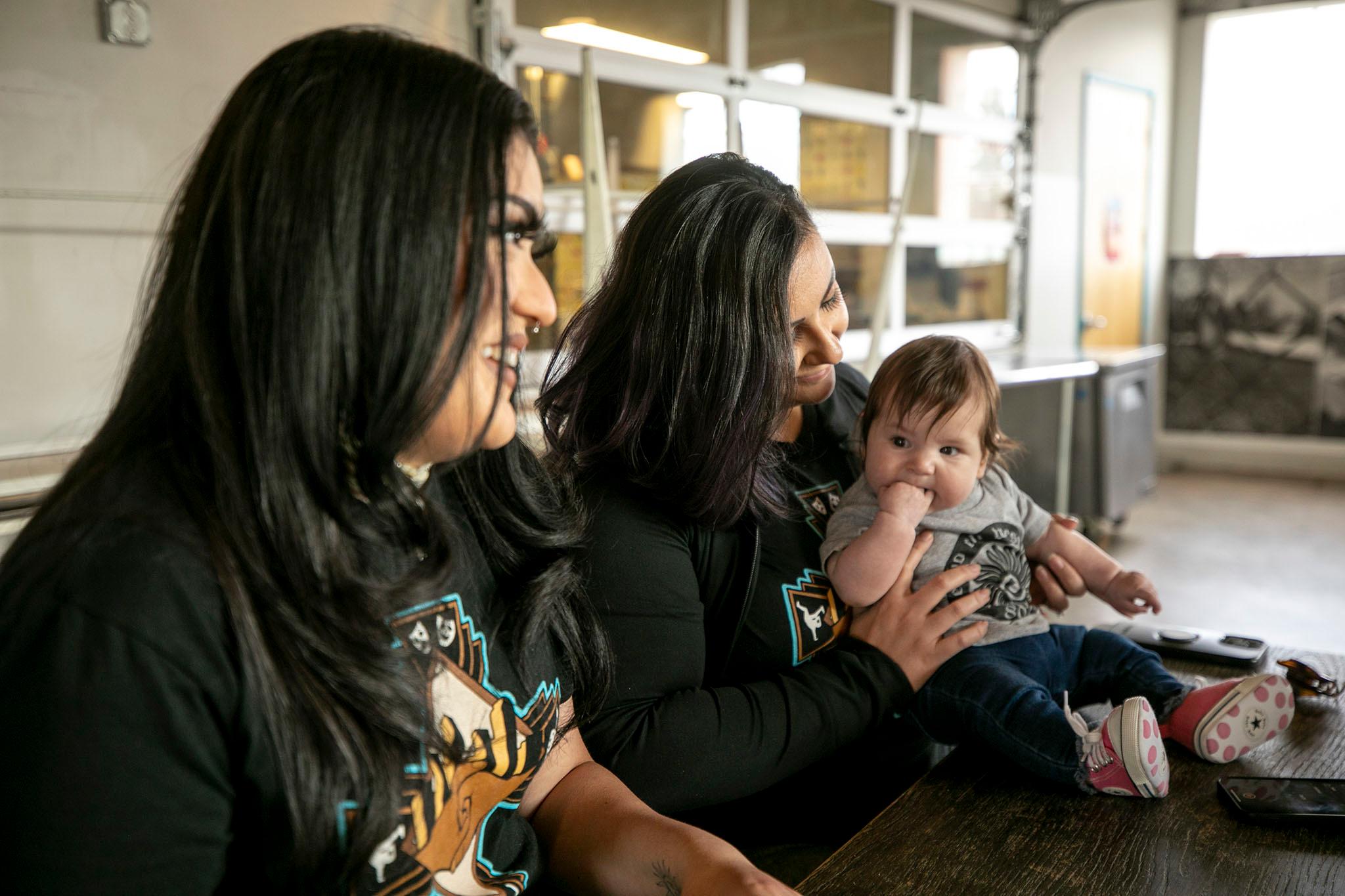
Rodriguez accepted Lucero's offer. Now the pair are mentor and mentee.
Rodriguez said Lucero inspires her to be a better teacher everyday and become a similar role model to her students. Besides teaching art with In Lak'ech, Rodriguez is also an early childhood education teacher at a local Montessori school.
At the Cinco de Mayo en Westwood event, Rodriguez's and her students' art will be on display in the RISE Westwood gallery. The exhibit, called "Mexico Lindo y Querido," will also feature photography from other local artists. The big pieces from Rodriguez's students will be their customized piñatas.
Brief history lesson: Lucero said before the traditional paper piñata was born, Mayans filled clay pots with goodies and kicked them around to open them. The tissue-paper variety we see today can be traced back to Chinese culture and a Spaniard who brought tissue paper to Mexico.
Traditional piñatas, typically used around Christmas, have seven points to represent the seven deadly sins. Beating the stuffed shell until it breaks is a way to beat away the sins.
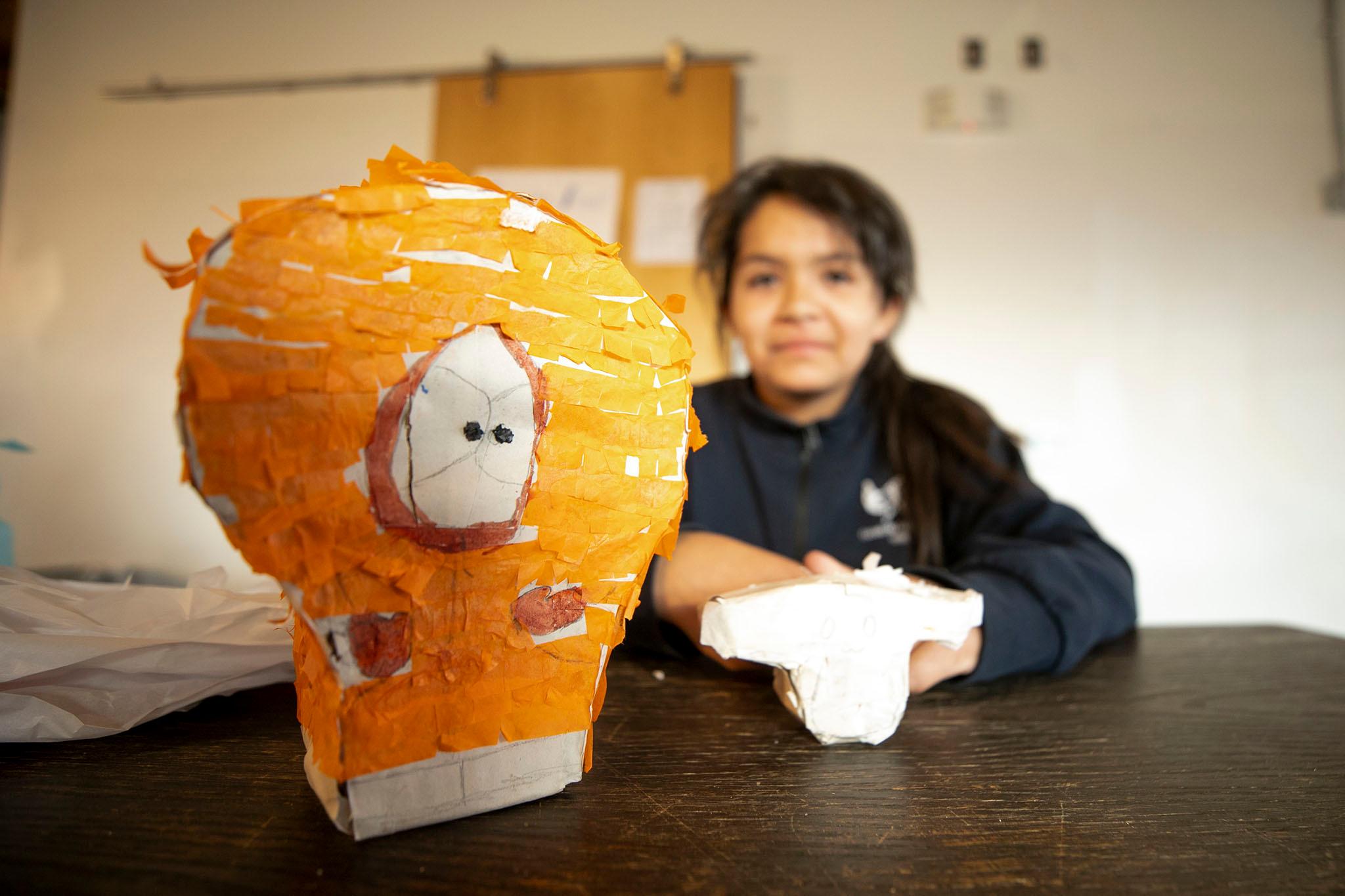
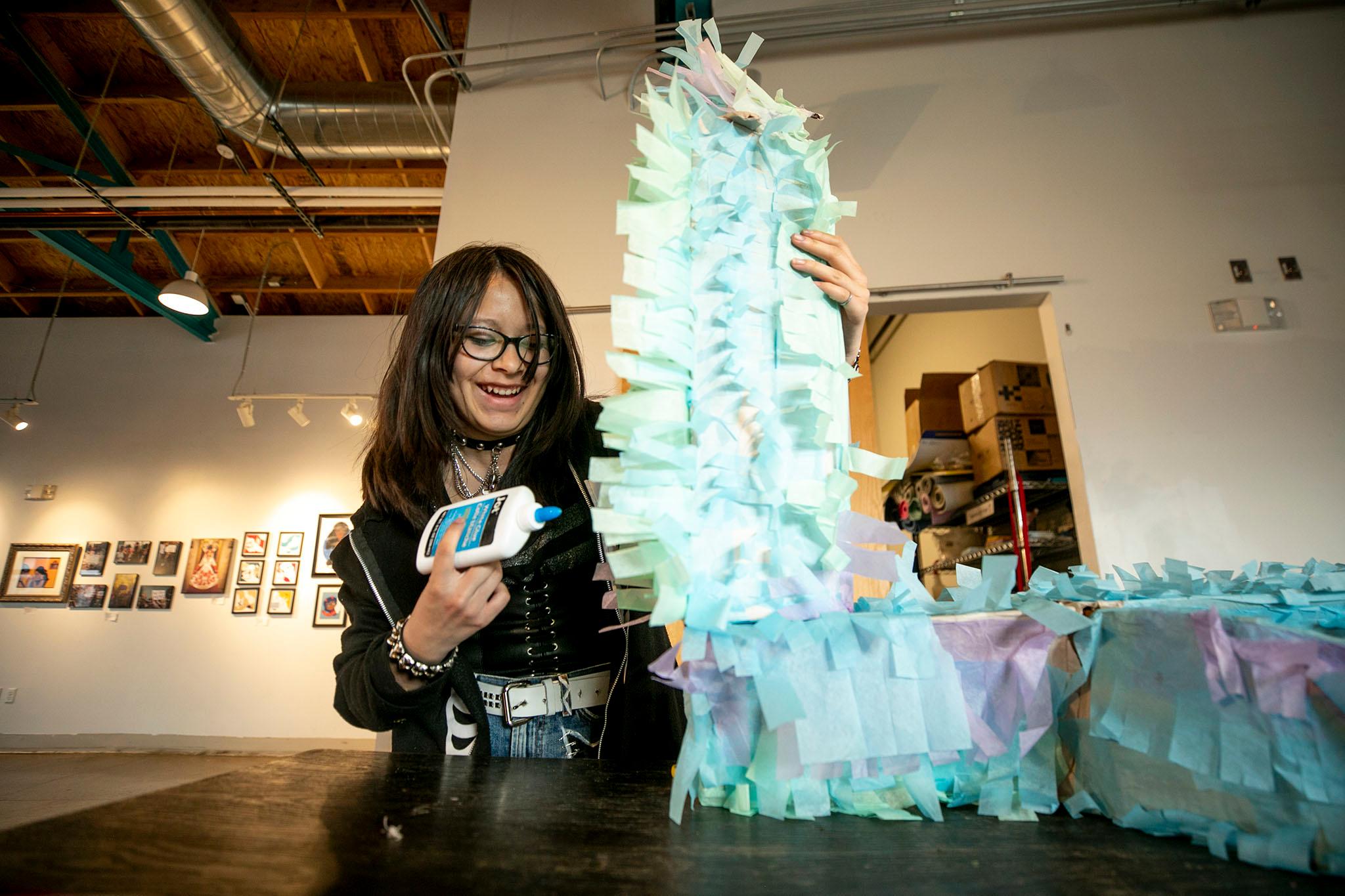
The kids are making more commercial piñatas, like the kind you might see at a birthday party.
There's a sizably large hammerhead shark, an anime-themed piñata, one shaped like Kenny from South Park and a piñata dedicated to Bad Bunny's "Un Verano Sin Ti" album cover art.
Rodriguez will have a few of her pieces up. Like her favorite artist, many of her pieces are self-portraits or include some image of herself.
"I've always had this thing where there's always me in my own paintings, even unintentionally," Rodriguez said. "I feel like there wasn't enough artwork out there that represented me and people that look like me."
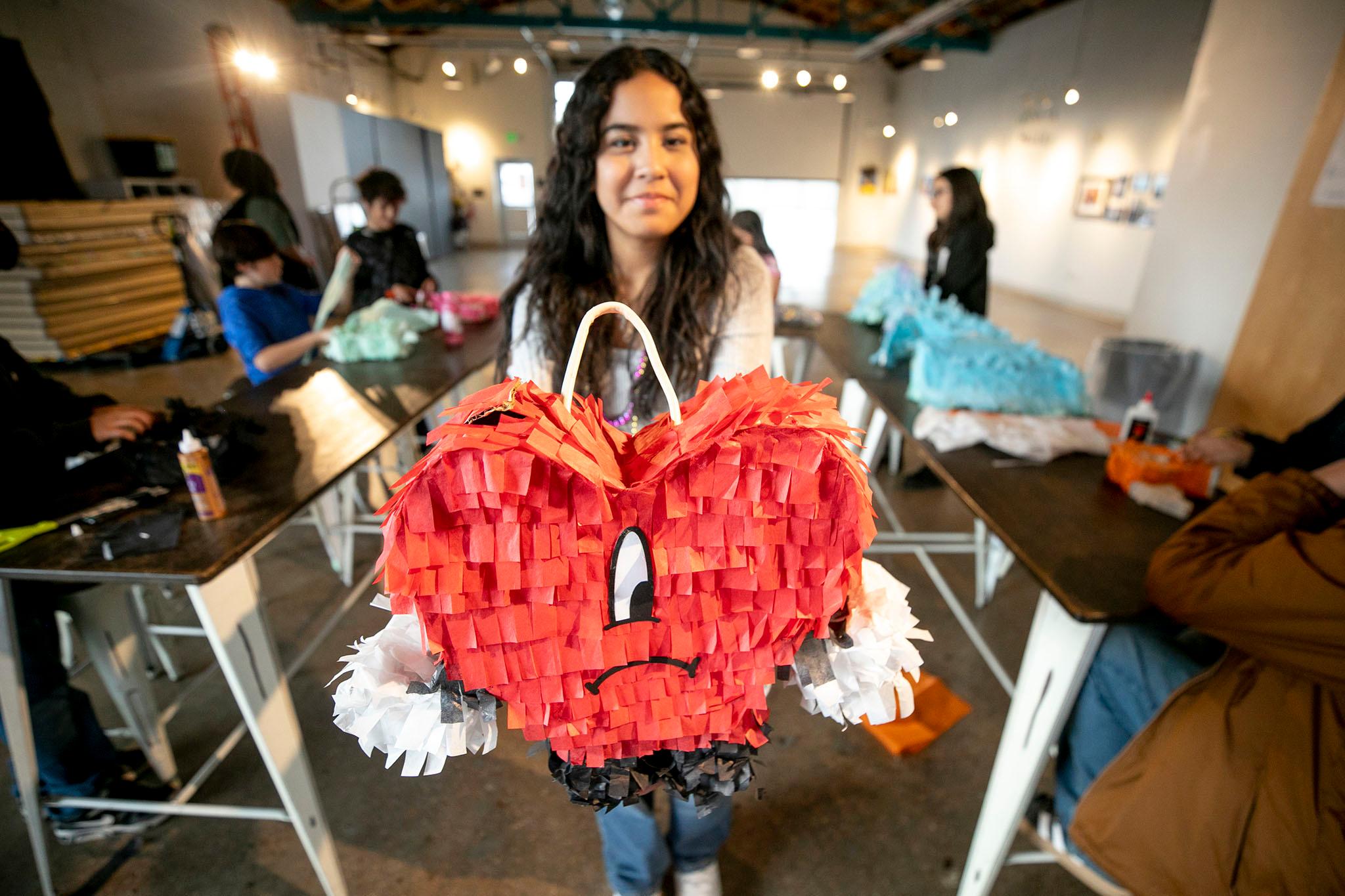
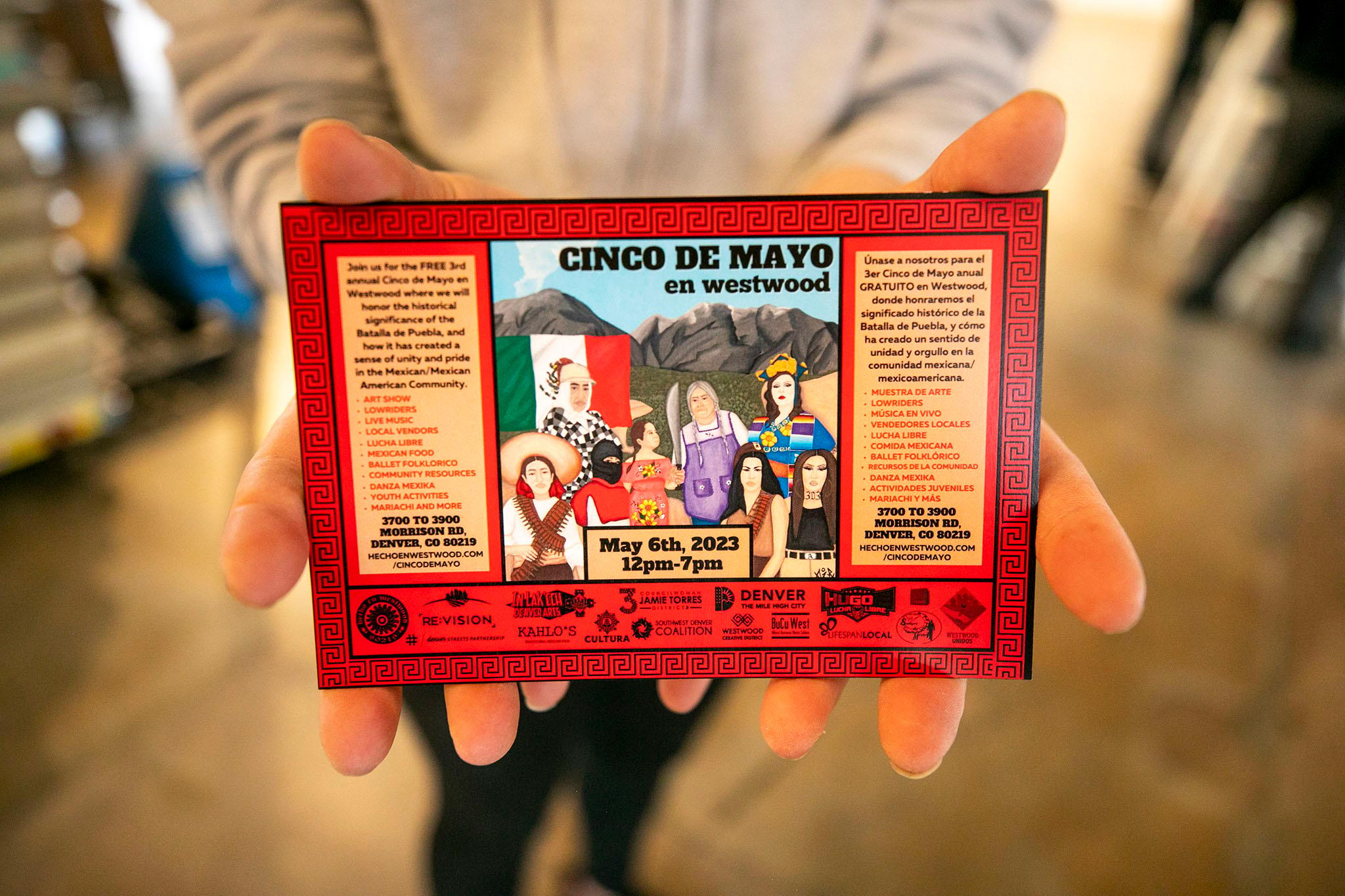
Rodriguez's main piece is the painting she produced for the Cinco flier.
It features strong women who participated in wars like the Battle of Puebla or the Mexican Revolution to activist in the Chicano movement, down to Rodriguez and Lucero, who continue to live through their ancestors, spread knowledge and support their communities.
The Popocatépetl and Iztaccíhuatl volcanoes sit in the background of the painting. The two mountains are part of a Mēxihcah love story slightly similar to Romeo and Juliet.
Starting from the left, there's an adelita dressed in a traditional skirt with a cross-bullet belt. Standing in front of the Mexican flag is Maria Moreno, a farmer and labor organizer, who later became the first woman to be hired as a union representative.
There's Comandanta Ramona, an officer of the Zapatista Army of National Liberation, a movement that sought Indigenous control over land in the southern Mexico state of Chiapas. Chicana legend Hilda Reyes, who was a strong member of the Chicano movement through the Brown Berets and Las Adelitas de Aztlán, stands next to Rodriguez with a bullet belt.
Then there is Rodriguez herself. Hoop earrings, khaki pants and "303" tattooed on her neck. It's an ode to Chola-style and to never be afraid of stereotypes but also Westwood and Denver.
"I wanted people to know where this painting came from," Rodriguez said. "I chose the Chicano look to represent Westwood...It's powerful because it's often seen as a stereotype and it shouldn't be. We're powerful."

On Saturday, Denverites can head over to the westside from 12 p.m. to 7 p.m. for live music, lowriders, local food and art vendors, a youth cooking class, Hugo's Lucha Libre and, of course, the art.
Lucero said In Lak'ech's mariachi and folklorico classes will also be performing. It's all just a part of celebrating and sharing the culture that runs deep through the westside and it's residents.
"[In Lak'ech] is the ancestral belief that we are all extensions of one another and that if we learn to better love and respect each other, we in turn show the world that we love and respect ourselves," Lucero said. "We honor the residents here and we want to give them the space to celebrate...We're going to keep being that platform for our community to gather and be able to celebrate with each other."
